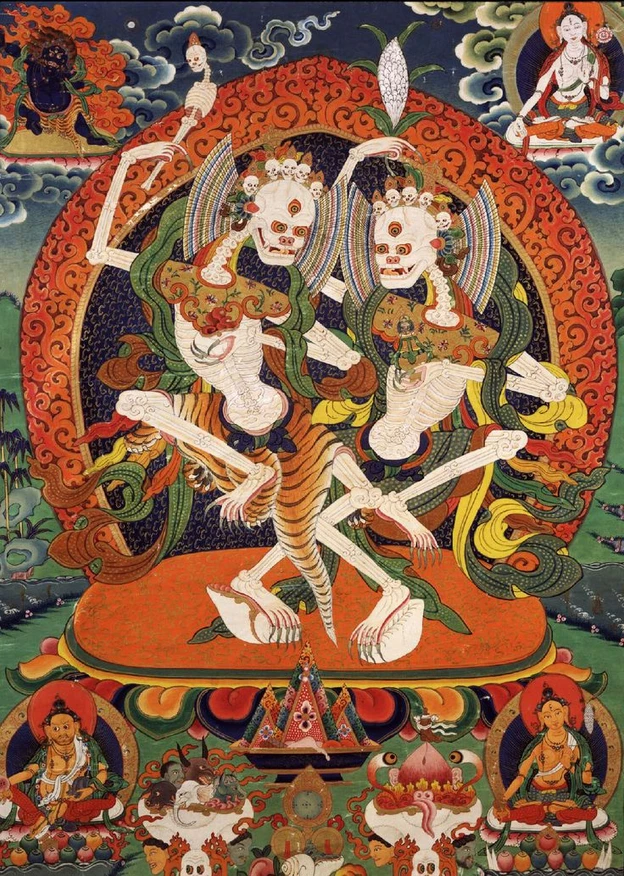The state in between Death and Life
The bardo—or the “in-between”—has come to describe the transitional state between death and rebirth, but its qualities also characterize the gap arising between any two states. In fact, we live in a continuous bardo, forever suspended between past and future, although we seldom recognize it.
In Tibetan Buddhism, bardo is the central theme of the Bardo Thodol (literally Liberation Through Hearing During the Intermediate State), the Tibetan Book of the Dead. The period between death and rebirth lasts 49 days and involves three bardos. The first is the moment of death itself. The consciousness of the newly deceased becomes aware of and accepts the fact that it has recently died, and it reflects upon its past life. In the second bardo, it encounters frightening apparitions. Without an understanding that these apparitions are unreal, the consciousness becomes confused and, depending upon its karma, may be drawn into a rebirth that impedes its liberation. The third bardo is the transition into a new body.
Metaphorically, bardo can describe times when our usual way of life becomes suspended, as, for example, during a period of illness or during a meditation retreat. Such times can prove fruitful for spiritual progress because external constraints diminish. Bardo refers to that state in which we have lost our old reality and it is no longer available to us.
Anyone who has experienced this kind of loss knows what it means to be disrupted, to be entombed between death and rebirth. We often label that a state of shock. In those moments, we lose our grip on the old reality and yet have no sense what a new one might be like. There is no ground, no certainty, and no reference point—there is, in a sense,no rest.
The bardo teachings are really about recognizing the value of giving up the game, which we play without even giving it a second thought. But when we are severely ill or in hospice, and we have to cede control over our own bodily functions to strangers, holding it all together is not an option.
What makes death and impermanence so painful is our idea of the strict dichotomy between existence and nonexistence. At the moment of death, instead of being caught between the ideas of existence and nonexistence, instead of this crisis of having everything that matters to us taken away all at once, something else can open up entirely; we shift our attention to the nucleus of being, to presence itself, experiencing itself.
Death is connected to rebirth. The rupture of bardo inevitably leads to whatever is next. If we appreciate these successive deaths and rebirths in our lives, then we can value the bardo for what it is—the pause that makes movement apparent, the silence that makes all sounds more vivid, the end that clarifies what exactly we will now be beginning. Impermanence is not just an illuminator of loss. It is an illuminator of newness, the ever-unfolding present moment and its creativity.
Nine Point Meditation on Death – click here
Recommended reading
- The Luminous Gap in Bardo by Francesca Freemantle
- Something Strange is Happening by Duane Michals
- The In-between State by Pema Chödrön
- A Tree With a View by John House
- Bardo of Lost Mammals by Andrew Schelling
- Insomnia by Judith Simmer-Brown
- The Opportunity of Uncertainty by Sogyal Rinpoche
- My Brief Career Composing Spanish Music by William R. Stimson
To read more – click here




